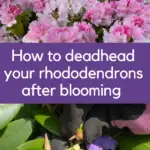
The path going past my rhododendrons is looking extra worn out, and I’m the reason why.
You see, I was pacing back and forth for a month in anticipation of the rhododendrons opening in full bloom.
We’ve had a particularly wet and very cold spring this year, so these lovely shrubs took their sweet time. It was only around mid-May that the flowers really started to open up. As I’m writing this article in late June, they’re already on their way out.
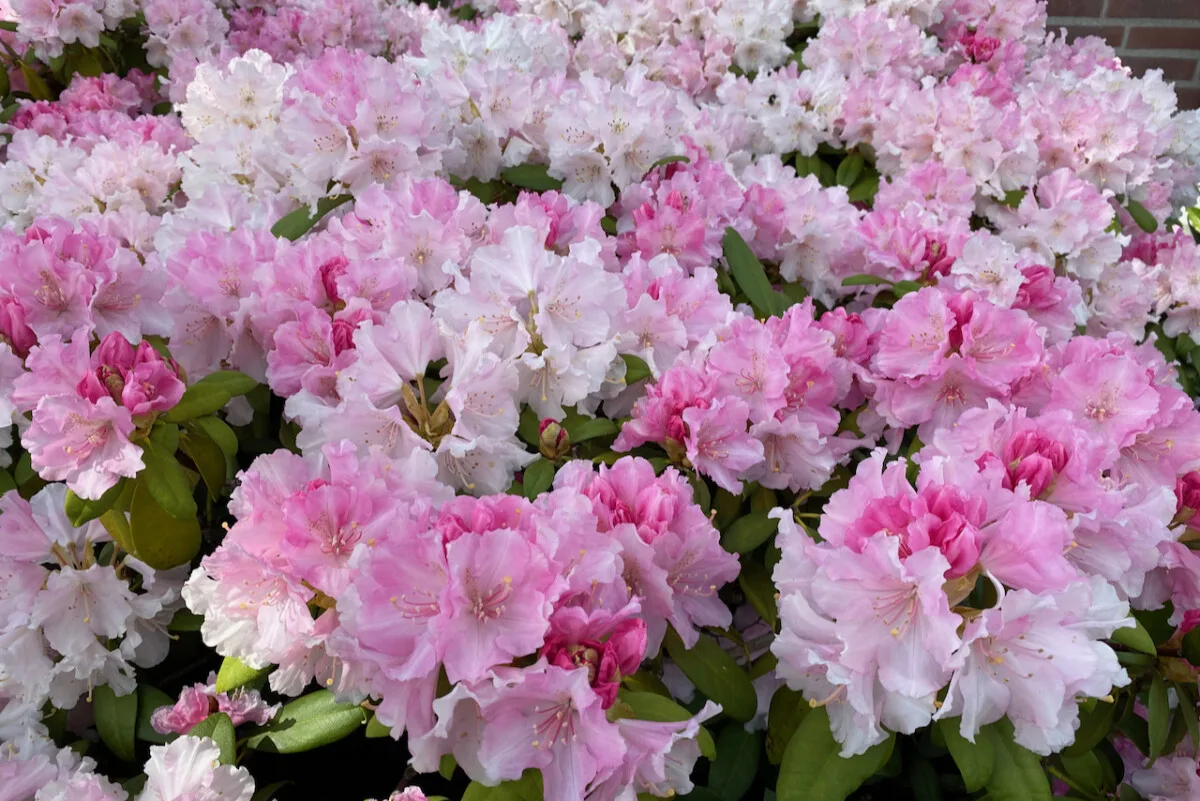
But there’s one job left for me to do now that the rhododendrons are done flowering – I need to deadhead them. Let’s see why that’s so important at this time of year.
Should I deadhead rhododendrons?
Yes, you should. But not for the main reason we usually deadhead other perennials.
The most common understanding of deadheading centers around removing the spent flowers in order to encourage the plant to bloom again.
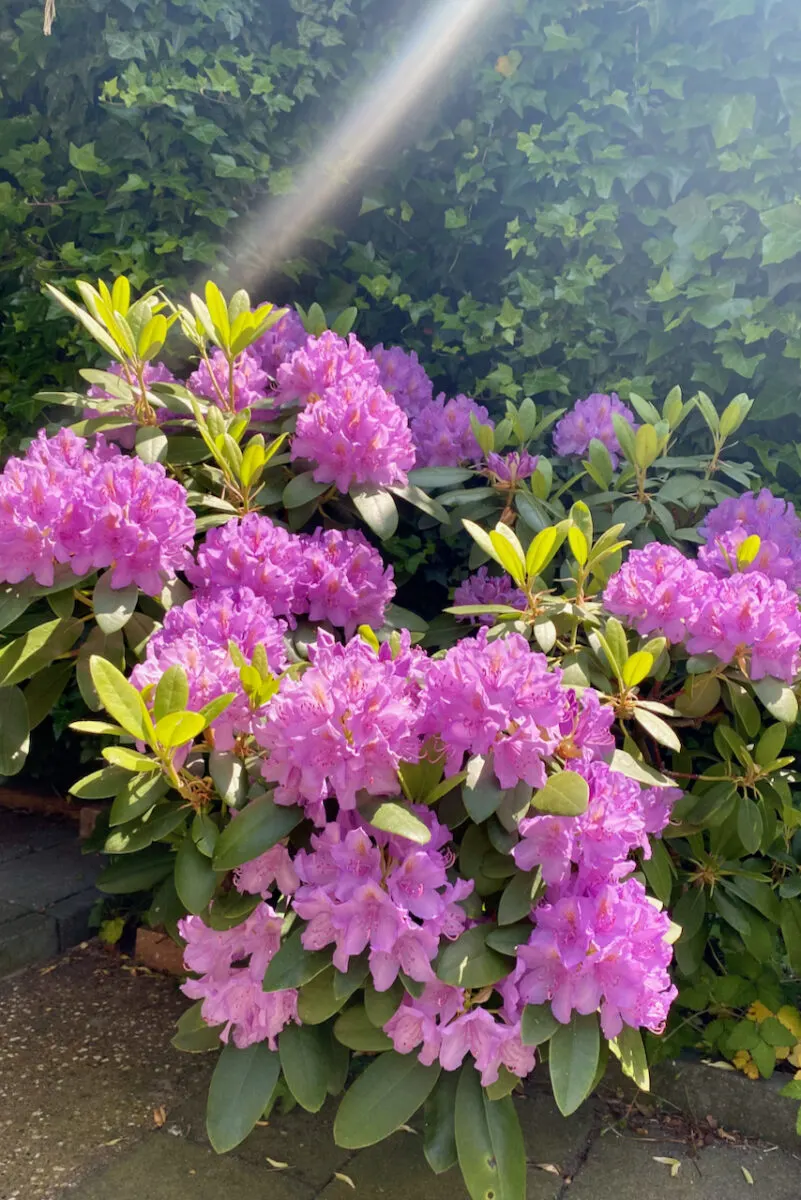
There is no chance of reblooming for rhododendrons. These evergreen shrubs set their delightful spring buds last summer. So no amount of spring deadheading will produce more flowers this year.
However, deadheading rhododendrons this year, after they’ve bloomed, will improve flower production for next year.
Why should I deadhead rhododendrons?
When we’re deadheading rhody shrubs, we’re basically removing the seed pods that the plant is putting out in order to reproduce. By doing so, we’re telling the plant there’s no need to spend its limited energy on setting seeds. Instead, the rhododendron will redirect that energy towards new growth – both flower buds and leaf buds. It’s that new growth that forms the basis of next year’s blooms.
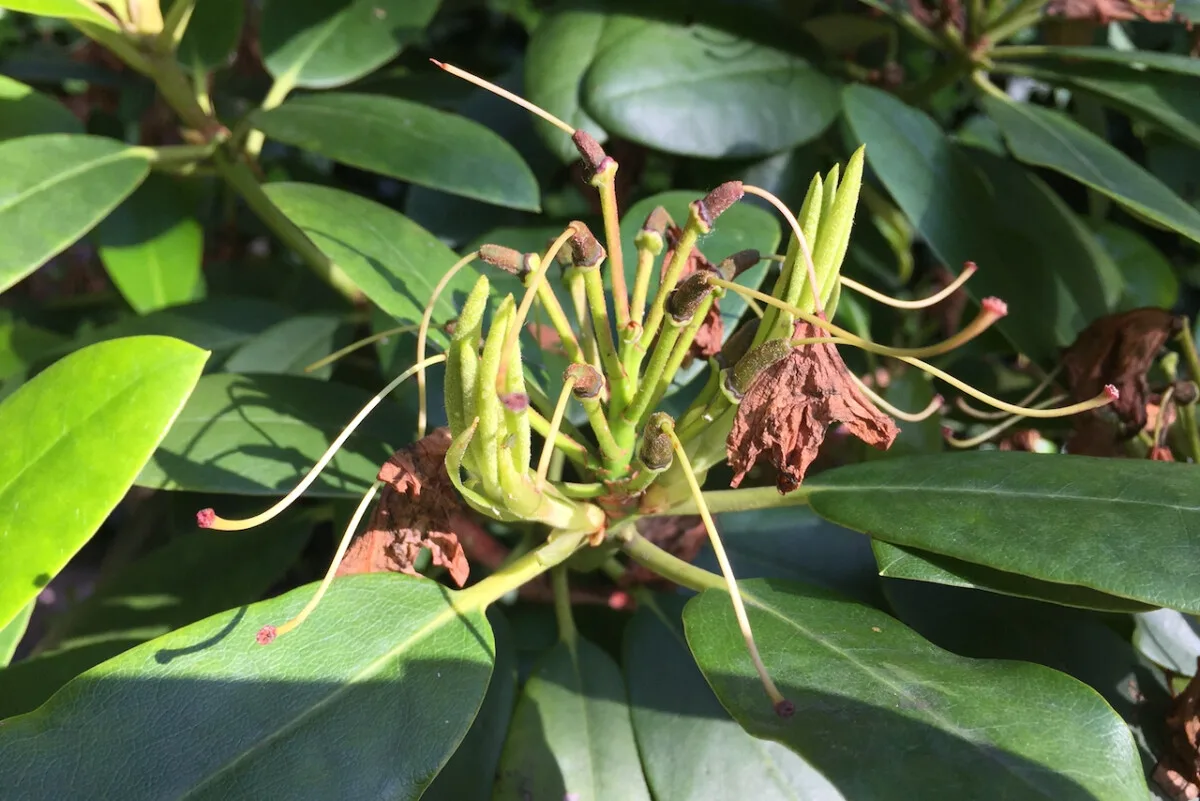
So we’re deadheading for a rather distant future, at least in “gardening time”. We’re deadheading for next year.
What happens if I don’t deadhead rhododendrons?
If you choose to skip deadheading this year in order to collect mature seeds, nothing bad will happen. But you might notice that the flower production next year will not be as showy. You will get smaller flowers and possibly fewer of them.
Deadheading rhododendrons also makes the evergreen foliage look neater and tidier over the summer months, as the seed pods might take a couple of months to dry up and fall all by themselves.
When should I deadhead rhododendrons?
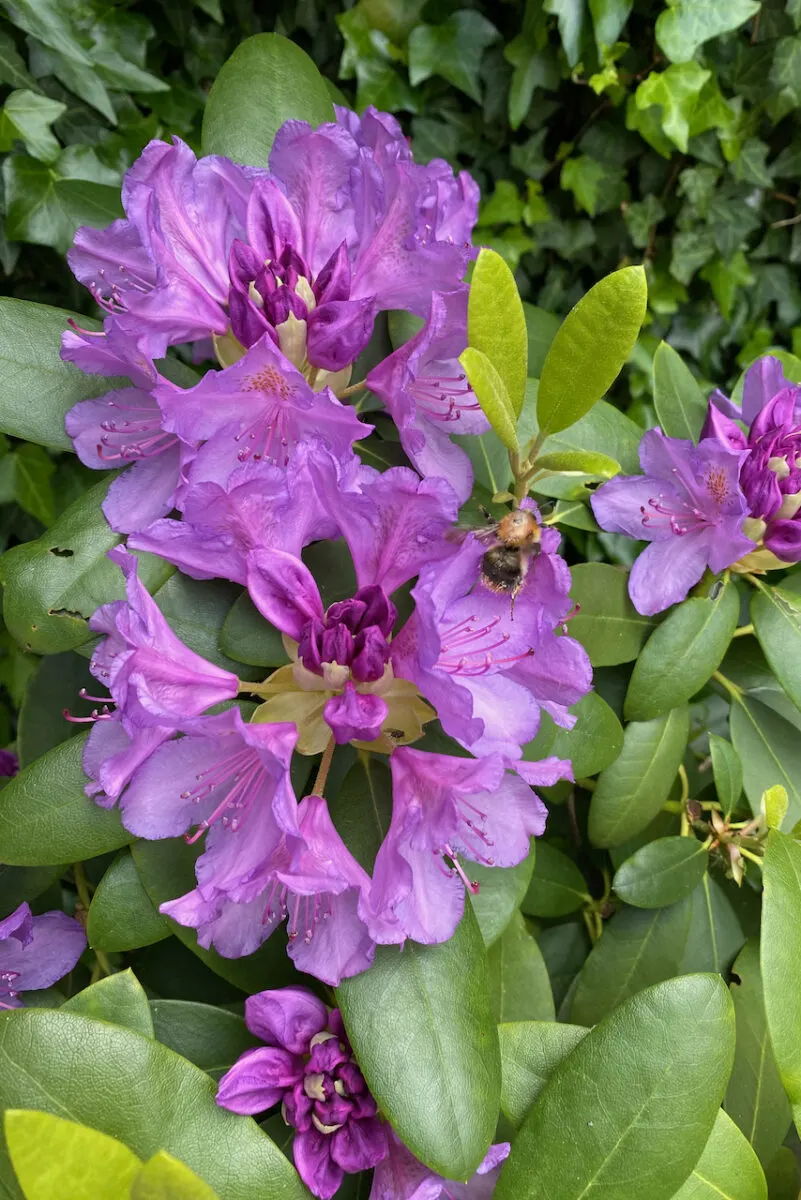
This depends on your tolerance for sad-looking dying flowers. You can start deadheading as soon as the flowers look like the ones in the photo below. The shrubs have already had their best life in the sun; the pollinators have dutifully done their job; so it’s now just a matter of the flowers shriveling up and exposing the incipient seed pods.
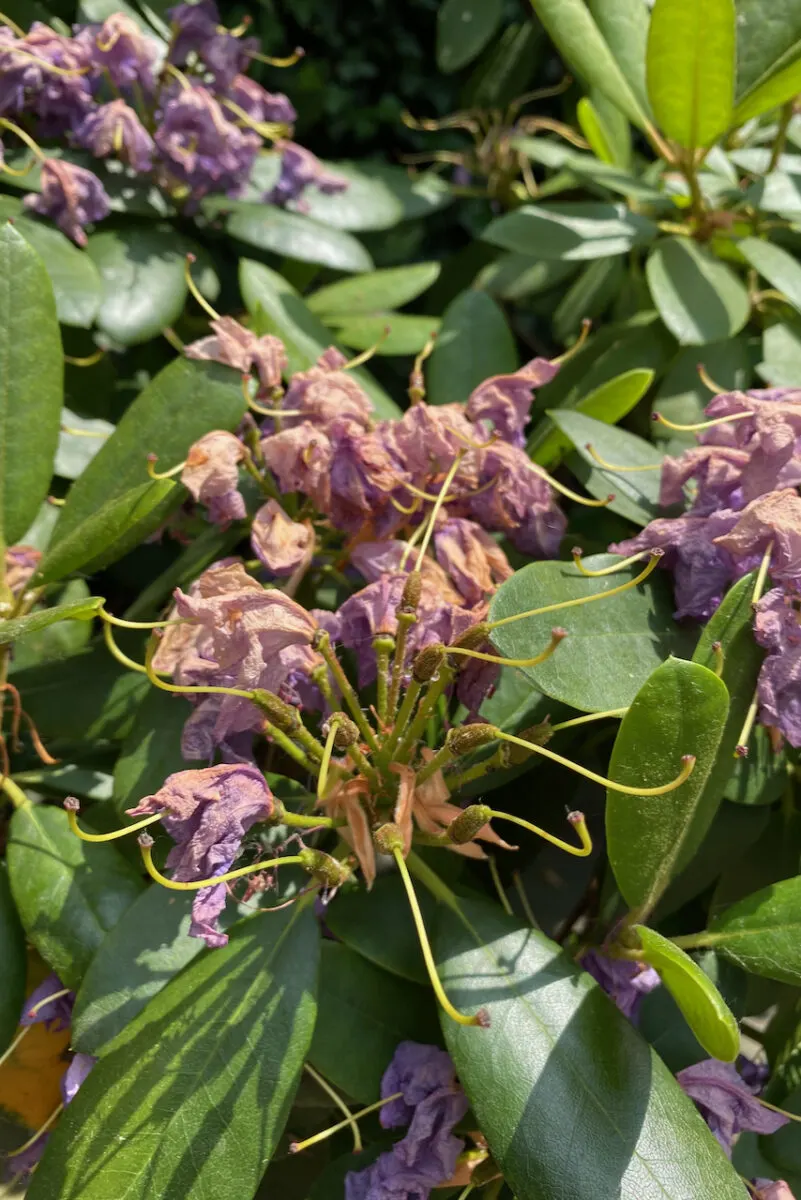
In my garden, it took about three weeks for the rhododendron flowers to go from full bloom to full flop. But that varies from year to year, even in the same garden, depending on temperature and precipitation patterns.
In general, it’s better to deadhead earlier rather than later for two reasons. First, the plant does not expend energy in setting the seeds. And secondly, the longer you leave it, the bigger the new buds will get, which makes it likely for them to get in the way while you cut into the old growth.
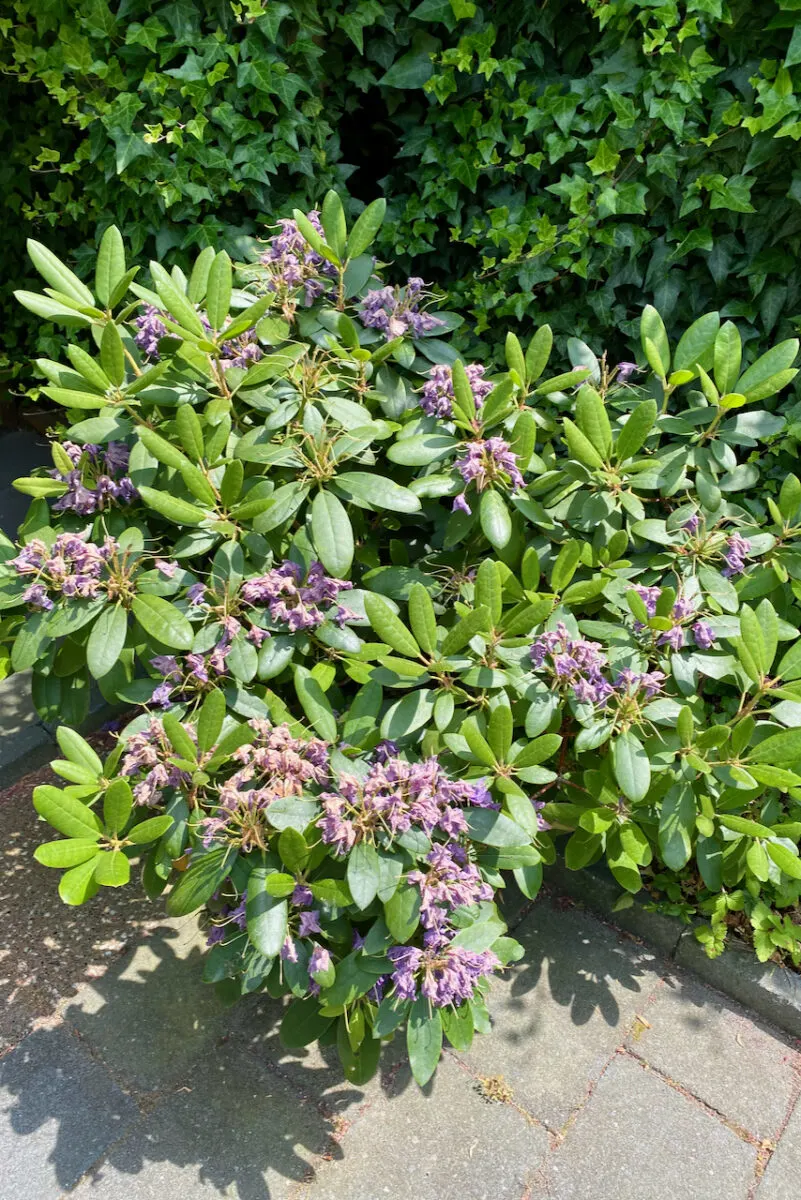
Ok, but I’ve left it too late. Can I still deadhead rhododendrons?
Yes, you can still deadhead rhodies even when the seed heads are all brown and shriveled up. Just make sure you don’t remove the new growth.
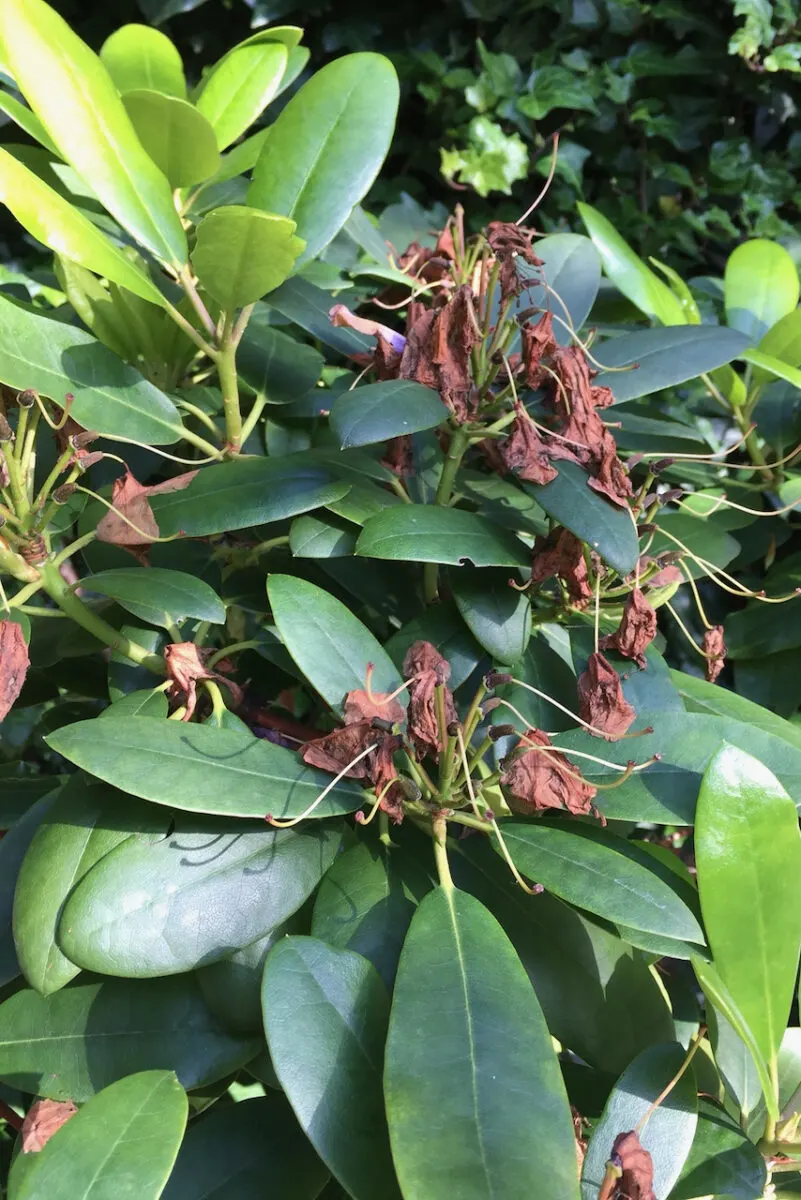
How do I deadhead rhododendrons?
First, start by identifying the end of the flower cluster.
The flower clusters, also called trusses, end in a sort of ring where they connect to the main stem. Check out the photo below. That’s where the trusses need to come off.
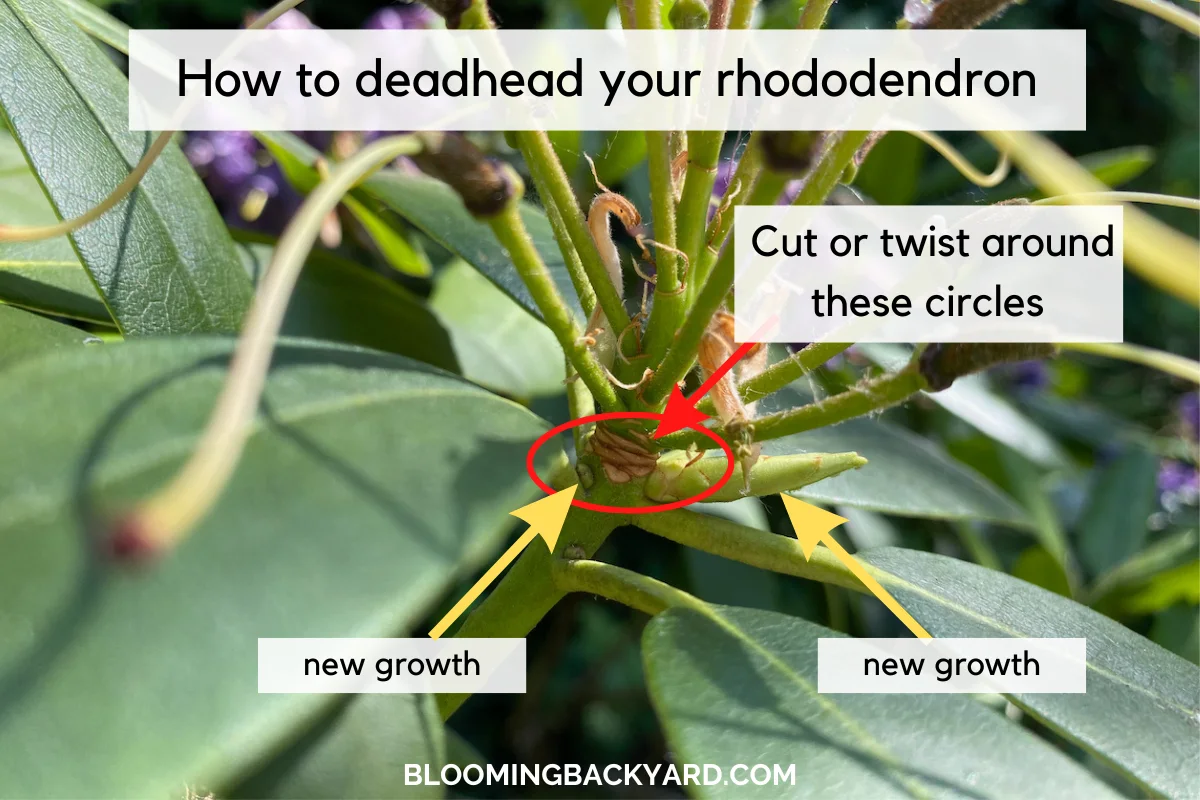
Once you’ve identified this ring, you have two choices.
Choice 1: Deadhead your rhododendron by hand.
This is really the most satisfying part for me. Simply grip the truss close to the circle and rotate it gently until it breaks off in your hand. Your other hand will be holding the main stem so as to prevent it from rotating too.
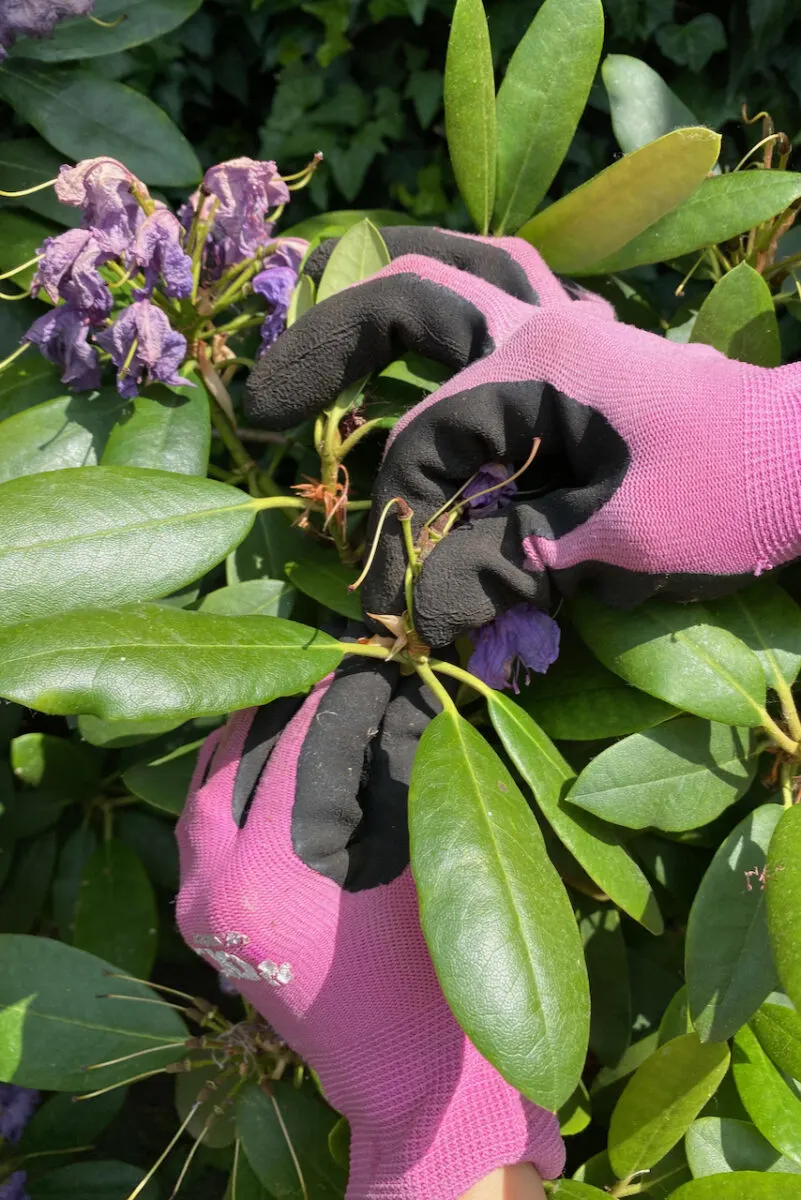
The drier the seed head is, the easier it will come off. When I do this manually, it’s easier for me to feel for the right spot where it will break. It’s also easier for me to protect the new growth, as opposed to when I’m working with secateurs.
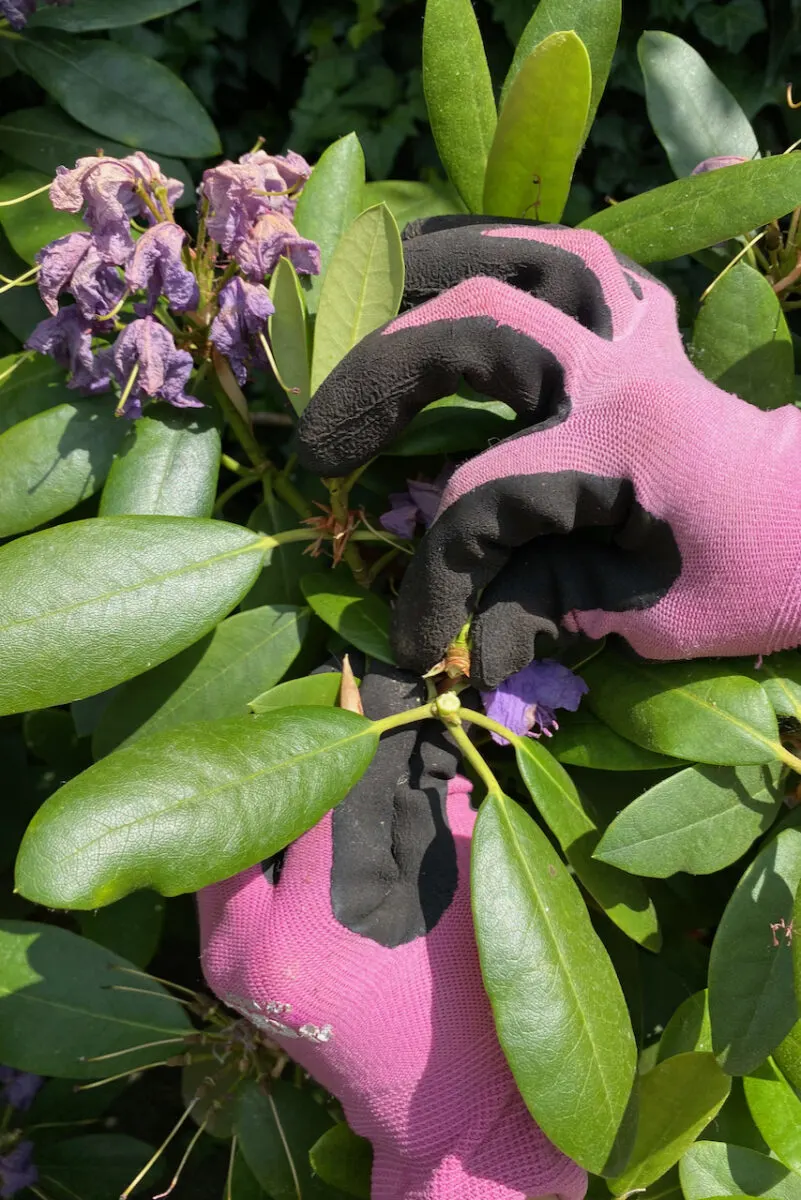
However, the disadvantage of doing this by hand is the sticky, syrup-like sap that the rhododendron secrete both from their seed pods and from the spot where you’re breaking them. So make sure you’re wearing gardening gloves when you deadhead your rhododendrons.
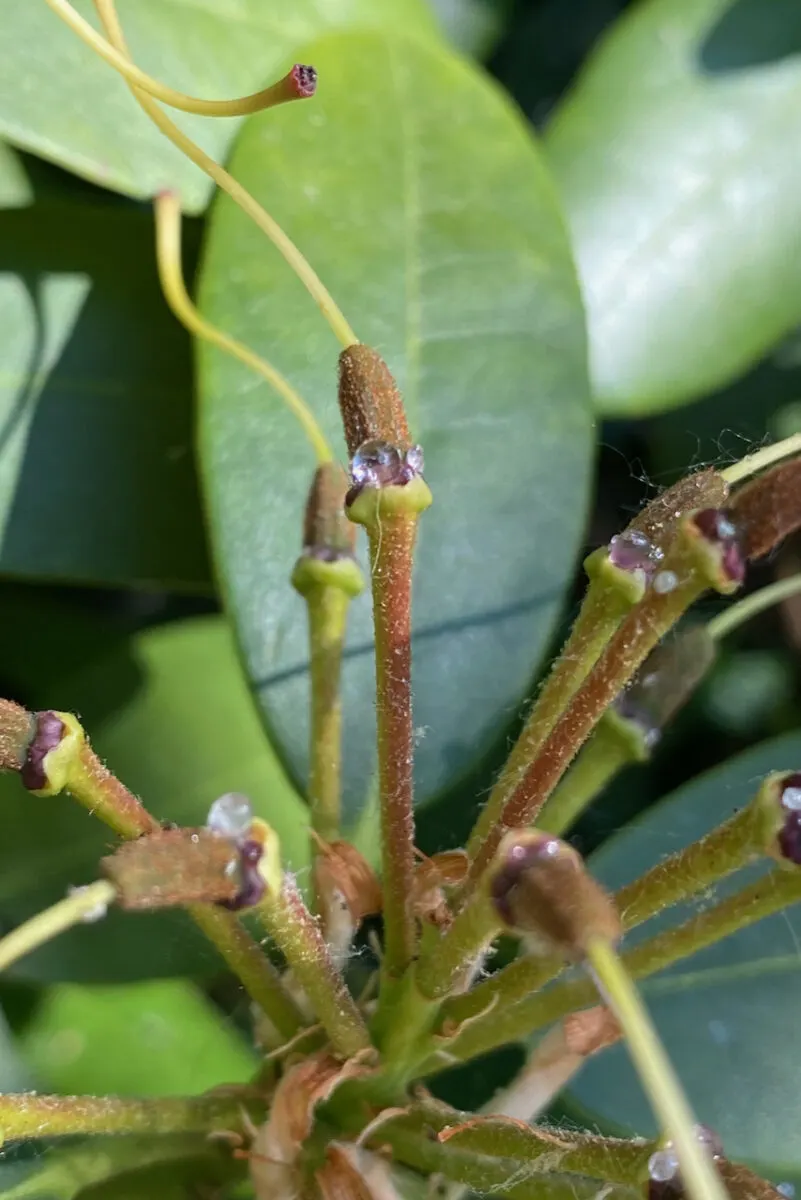
And keep in mind that you might have to wash the gloves as soon as you’re done, especially if you’re deadheading a large shrub or several plants in a row.
Here’s a quick video showing the process of deadheading your rhododendrons.
Choice 2: Deadhead your rhododendron using shears.
We’re using the same principle as above, but instead of snapping the seed heads off by hand, we’re cutting them using a pair of small pruning shears.
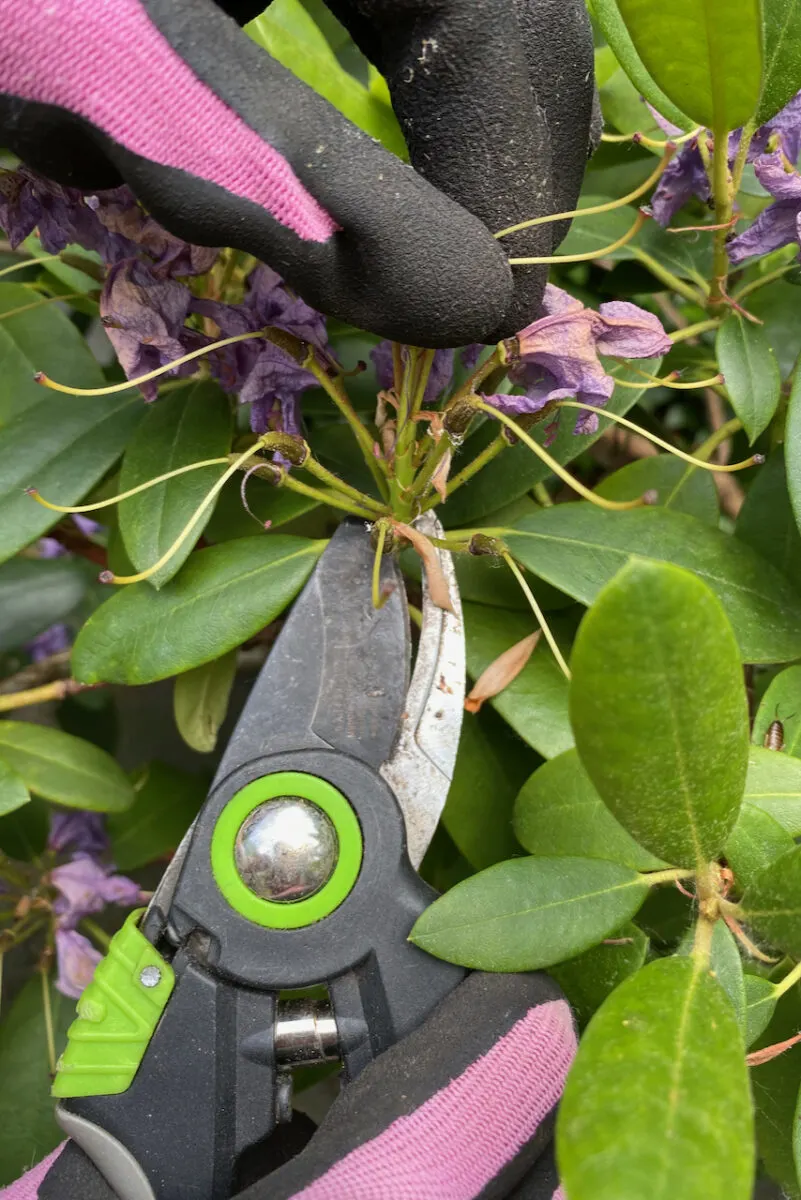
The advantage of using secateurs is that you’ll get a more precise cut. But I found that it’s harder for me to be as delicate when I cut off the trusses. I accidentally nipped the new buds with my shears a few times and felt very bad about it.
I’ll still get sap all over the shears, so there will be something that needs a good cleaning anyway.
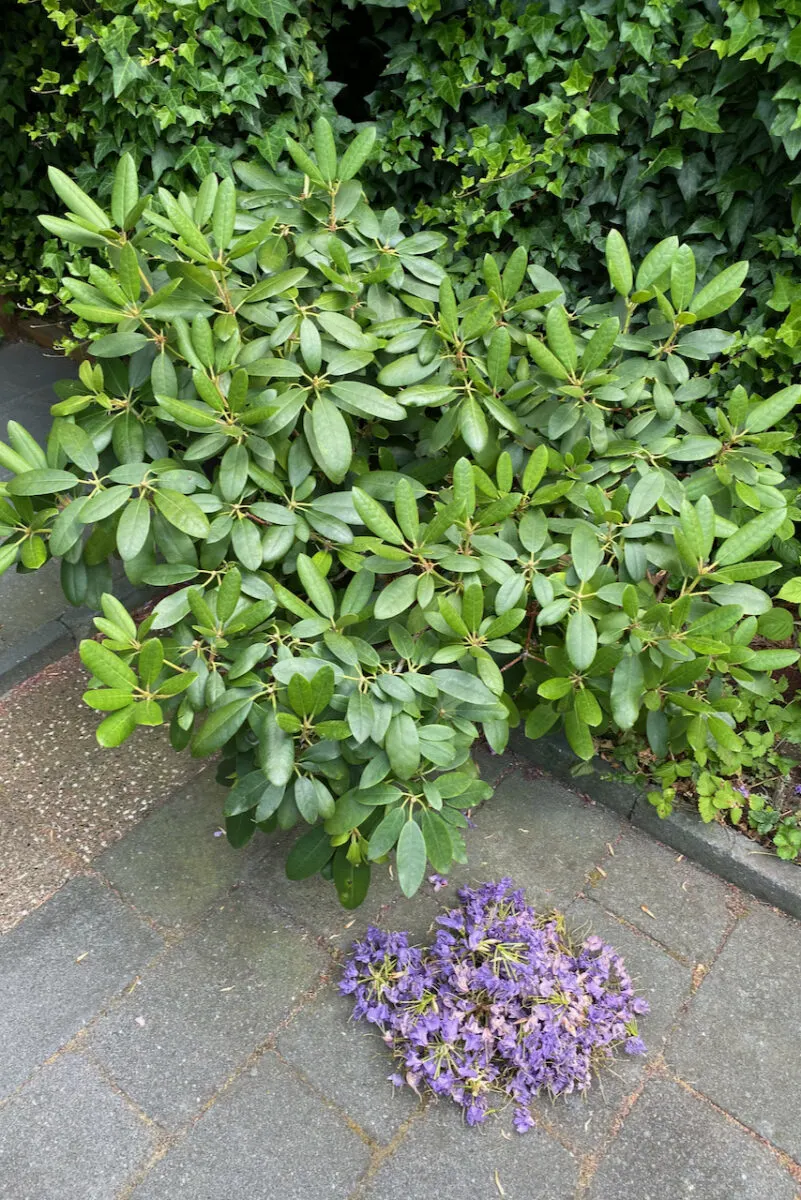
Will my rhododendron self-seed if I don’t deadhead it?
Oh, we should be so lucky! No, the rhododendron won’t self-seed in the manner of most perennials. It takes a long time (I’m talking years) and just the right conditions to grow a new rhododendron from seed to blooming shrub.
If you want more rhododendrons from your mature shrubs, the easiest way to propagate them is by taking semi-hardwood cuttings. (Stay tuned for a tutorial on how to take rhododendron cuttings later this summer.)
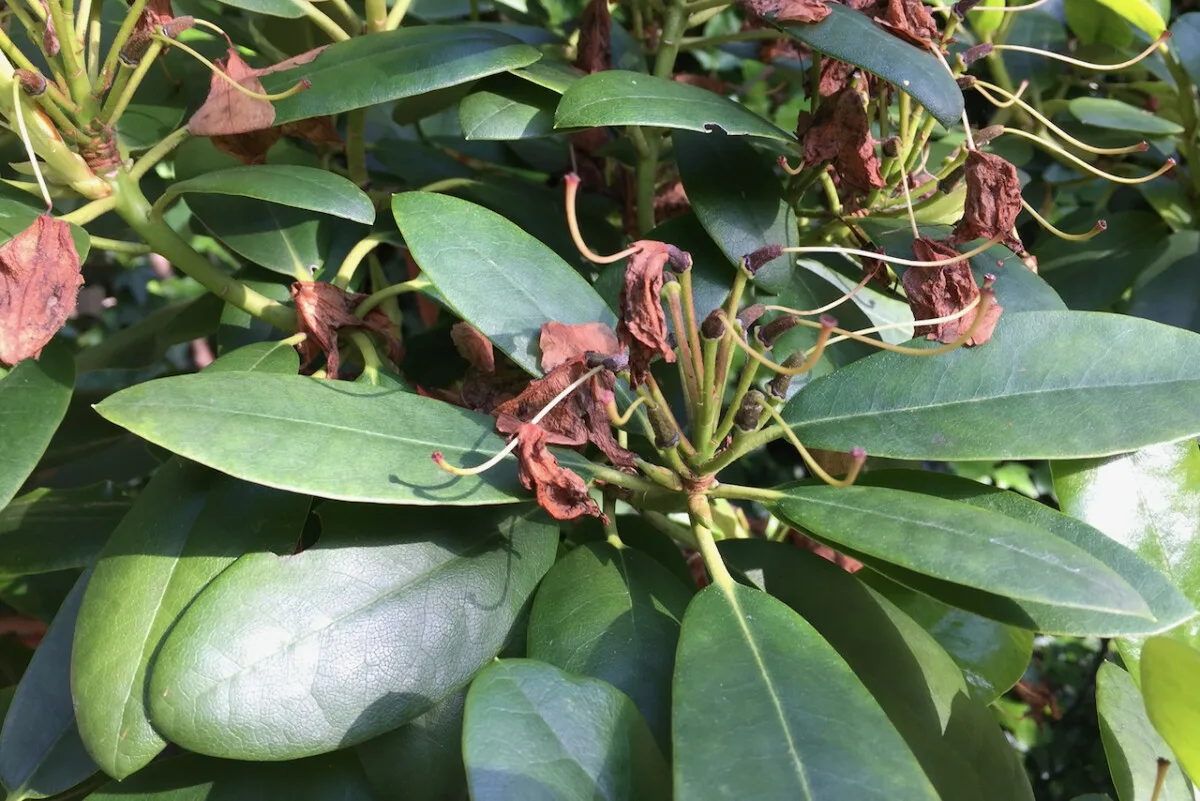
I remember I was very nervous the first time I deadheaded my rhododendrons. I had no idea what I was doing and didn’t want to harm my vibrant shrubs. Especially since it takes months for the harm to become evident. Luckily, once I removed a few seedheads, it turned out to be quite an easy (albeit messy) job. Like in most first-time gardening scenarios, the confidence came only after I’d started doing the job.

